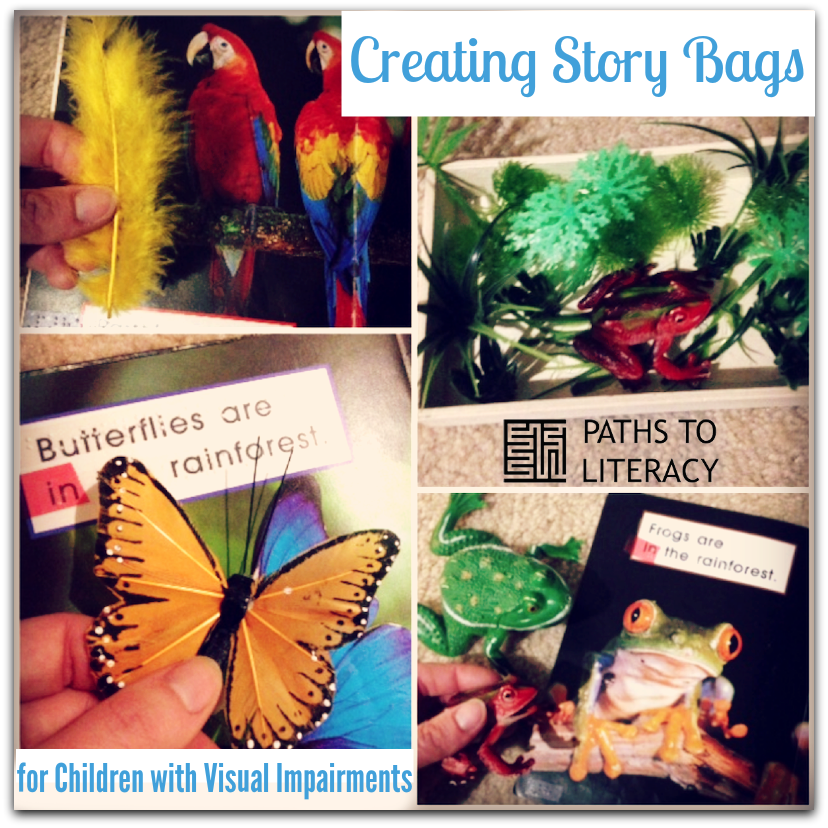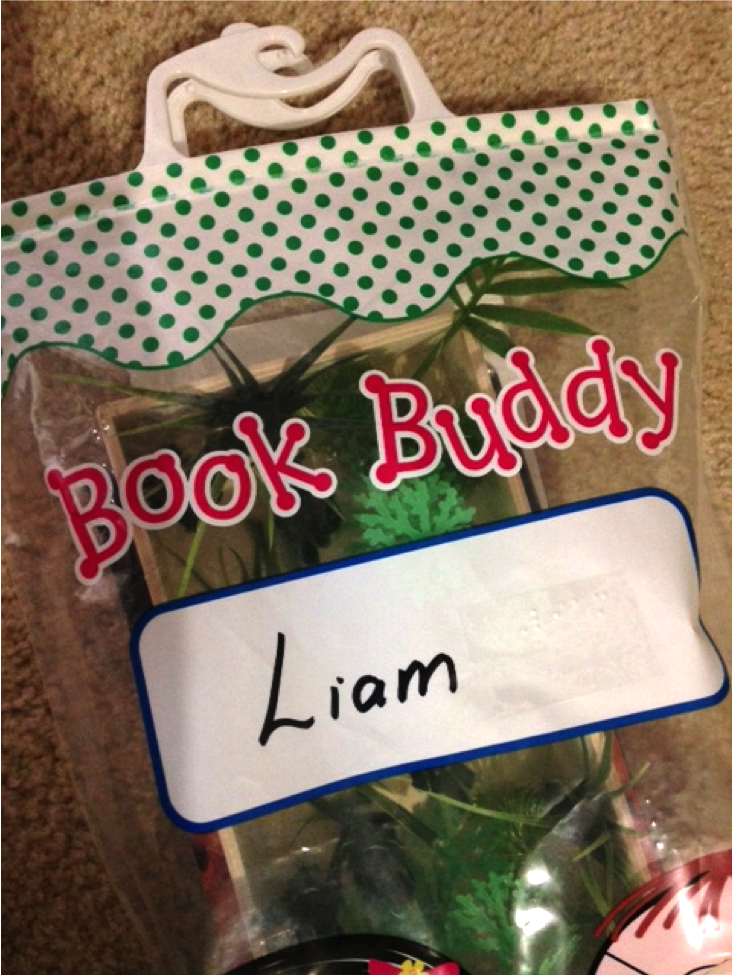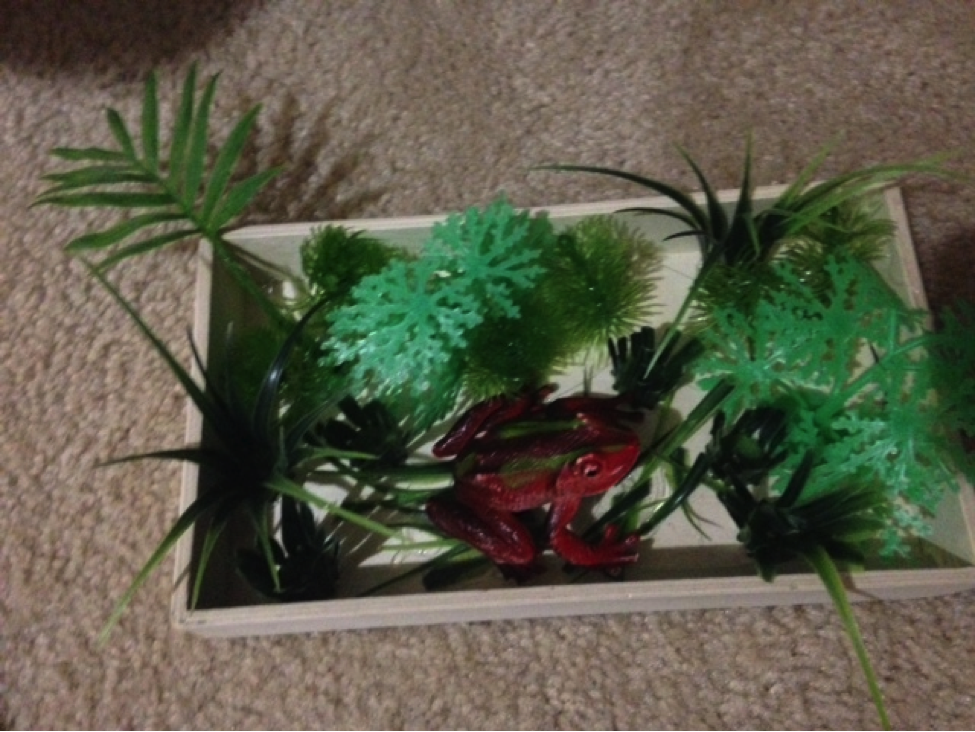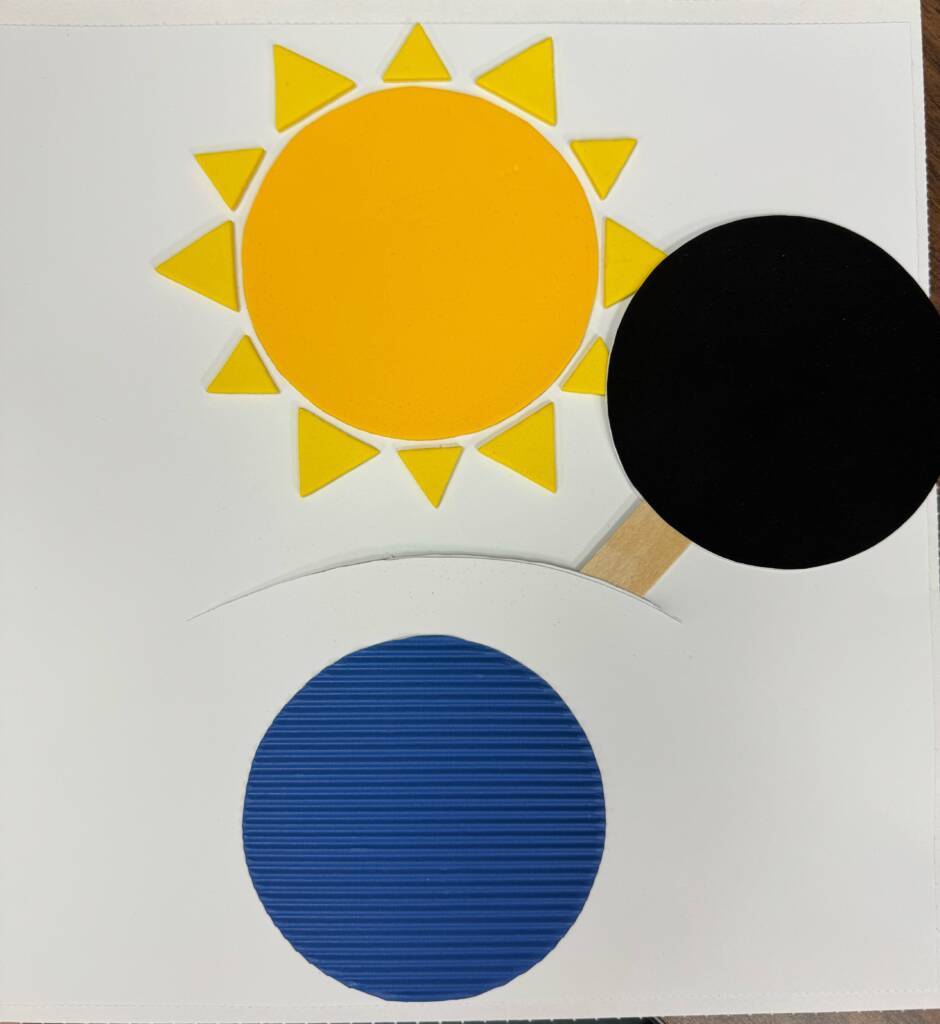My son Liam is in first grade this year in a mainstream classroom. He is deafblind and is learning to read braille. We are trying to use a balanced literacy approach. His TVI (Teacher of the Visually Impaired) is using the Building on Patterns Curriculum with modifications to the auditory section of the curriculum and also to support his first language ASL. In addition to word work and other braille activities Liam also belongs to a guided reading group with his peers (that have typical vision and hearing) that is led by his general education classroom teacher focusing on comprehension skills, literary elements, etc. (I could write on and on about his reading program alone!)
Adapting Guided Reading Books:
Guided Reading Book Bag should include:
- Book labeled with braille
- Objects to go with the book that help tell the story or support the text (real life is best when possible).
All of Liam’s guided reading books are labeled in braille. In this example of the “Animals of the Rainforest” I created a small box with a lot trees and plants to represent the rainforest. I had a toy animal to match the pictures in the book. Liam enjoyed adding the animals to the “Rainforest box” as we read along the story for homework this weekend.
Keeping the story items in the “book bag” makes it easy to carry back and forth from home and school and easy to store.






